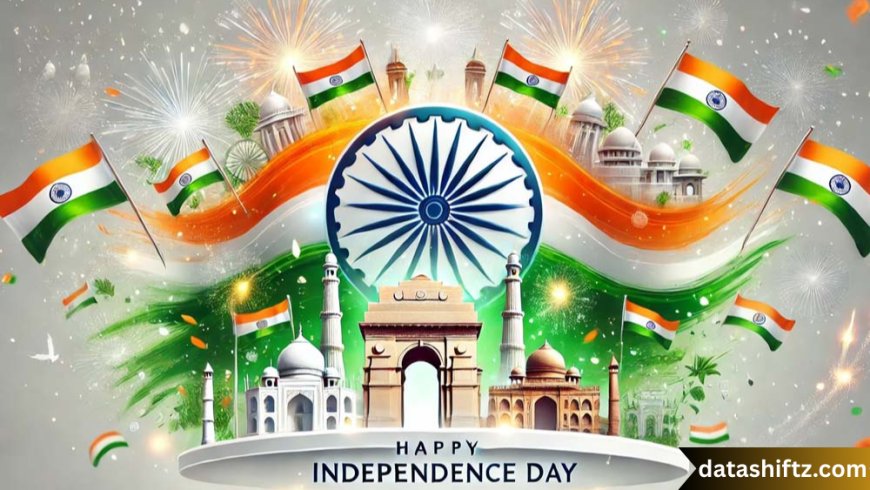Independence Day India: Celebrating Freedom and Unity

Introduction
Independence Day in India is one of the most significant national holidays, celebrated annually on August 15th. It marks the end of British colonial rule in 1947 and the birth of India as a sovereign nation. Beyond just a historical event, Independence Day embodies the spirit of patriotism, unity, and democracy for over 1.4 billion people. The day is celebrated with vibrant ceremonies, flag hoisting, cultural events, and reflections on India’s journey towards freedom and development. This article explores the history, significance, celebrations, and enduring legacy of Independence Day in India.
The Historical Background of India’s Independence
Colonial Rule and the Struggle for Freedom
India was under British rule for nearly two centuries, beginning with the British East India Company in the 18th century and later direct governance by the British Crown after 1858. The colonial period was marked by economic exploitation, social unrest, and political subjugation.
-
Early Resistance: Various revolts and uprisings, such as the 1857 Sepoy Mutiny, laid the groundwork for a broader nationalist movement.
-
Formation of the Indian National Congress: Founded in 1885, the Congress became the primary platform for political dialogue and struggle.
-
Mass Movements: Led by iconic figures like Mahatma Gandhi, Jawaharlal Nehru, and Subhas Chandra Bose, India witnessed movements such as the Non-Cooperation Movement, Civil Disobedience, and Quit India Movement.
The Road to August 15, 1947
-
After decades of struggle, World War II weakened British hold over India.
-
Political negotiations, coupled with growing demand for self-rule, accelerated the transfer of power.
-
On August 15, 1947, India officially gained independence, splitting into two nations — India and Pakistan — amidst great communal turmoil.
Significance and National Symbolism of Independence Day
National Pride and Patriotism
Independence Day is a day for all Indians to express pride in their country and respect for those who sacrificed their lives for freedom. It is a reminder of the values of democracy, secularism, and justice that form the foundation of the Indian Republic.
Key Symbols of the Celebration
| Symbol | Meaning | Role in Independence Day |
|---|---|---|
| Indian National Flag (Tricolor) | Represents courage (saffron), peace (white), and prosperity (green) | Hoisted at ceremonies; national pride |
| Ashoka Chakra (Wheel) | Symbolizes law, progress, and righteousness | Central emblem on the flag |
| National Anthem ("Jana Gana Mana") | Unites citizens in respect and patriotism | Sung during flag hoisting |
| Red Fort | Historic monument in Delhi | Site of Prime Minister’s annual speech |
| Martyrs' Memorials | Remembrance of freedom fighters | Tributes and ceremonies |
How Independence Day is Celebrated Across India
National Level Celebrations
The most iconic Independence Day event takes place at the Red Fort in Delhi, where the Prime Minister hoists the national flag and delivers a speech outlining the nation’s progress and future goals. This event is broadcast nationwide and watched by millions.
-
The President of India and other dignitaries attend.
-
Award ceremonies for bravery and national honors also take place.
-
Military parades and cultural performances showcase India’s diversity and strength.
Regional and Community Festivities
Independence Day is celebrated with great enthusiasm across the country:
-
Flag Hoisting: In schools, colleges, government offices, and public spaces.
-
Cultural Programs: Folk dances, patriotic songs, and theatrical performances reflecting local traditions.
-
Community Gatherings: People come together to sing the national anthem, share meals, and participate in awareness drives.
-
Lighting and Decorations: Buildings and streets are adorned with lights, banners, and the tricolor.
The Role of Educational Institutions
Schools play a crucial role in nurturing patriotic spirit through:
-
Flag hoisting ceremonies
-
Essay and painting competitions on freedom fighters
-
Special assemblies highlighting historical events
Major Events on Independence Day
| Event | Description | Location |
|---|---|---|
| Flag Hoisting by Prime Minister | National flag hoisting followed by speech | Red Fort, Delhi |
| Parades and Cultural Programs | Showcasing India’s military and cultural heritage | Various public venues |
| Award Ceremonies | Presentation of awards like Bharat Ratna, Padma Awards | Rashtrapati Bhavan |
| School Functions | Educational and patriotic programs | Schools and colleges nationwide |
| Community Celebrations | Local gatherings, patriotic singing, and feasts | Across towns and villages |
Important Figures in India’s Independence Movement
-
Mahatma Gandhi: Leader of non-violent resistance and civil disobedience.
-
Jawaharlal Nehru: First Prime Minister of India and a prominent nationalist leader.
-
Subhas Chandra Bose: Leader of the Indian National Army advocating armed resistance.
-
Bhagat Singh: Revolutionary freedom fighter remembered for his sacrifice.
-
Sardar Vallabhbhai Patel: Instrumental in uniting princely states into independent India.
-
Rani Lakshmibai: Symbol of resistance during the 1857 revolt.
The Legacy of Independence Day
Independence Day is not only a celebration but a reminder of the responsibilities that come with freedom. It inspires citizens to contribute towards nation-building, social justice, and economic progress.
-
It encourages reflection on India’s achievements and challenges.
-
It promotes national unity amid diversity.
-
It strengthens democratic values and respect for rights.
Conclusion
Independence Day India is a powerful symbol of the country’s struggle, sacrifices, and successes. It honors the heroes who paved the way for freedom and encourages the present generation to cherish and uphold democratic ideals. As India continues to grow on the global stage, August 15 remains a day of unity, pride, and hope for a brighter future.






























